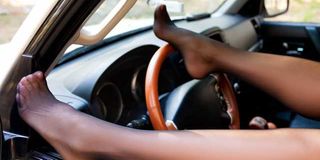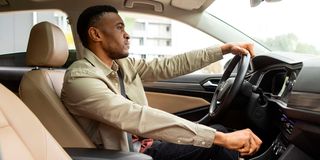Premium
Is it illegal to drive barefoot?

Wearing shoes to drive is still recommended in many markets.
I am told that it is illegal to drive a vehicle in bare feet. If this is true, then why is it against the law? Evans
I think this is a myth. It has been a widespread rumour in many parts of the world for decades (pre-dating the invention of servo-assisted brakes) and always wearing shoes to drive is still recommended in many markets. But, to the best of my limited knowledge, it is not a specific statute.
That does not make you immune from prosecution if the fact you were not wearing shoes can be shown (in a specific instance) to have contributed to causing a crash. And that is more likely than you might think.
If and where the idea is “enforced” anywhere, it will be on the grounds of safety – most especially in the event of emergency braking. Most of today’s drivers would be astonished at how hard you had to push the brake pedal to make an emergency stop before servos became common. In round numbers, you had to press at least twice as hard to deliver the equivalent braking pressure.
So what might also surprise you is that emergency braking can require a pressure – at the brake pads - of more than 400 psi (ten times the full pressure in your tyre). Even with the aid of hydraulics and the leverage of the brake pedal arm, early non-servo systems required a sustained foot pressure of up to 20 kilos, and sometimes a lot more.
On a long journey, enough to be tiring and, in an emergency, that’s more pressure than many people’s toes can muster. It requires leg and ankle muscles, and the ball of your foot needs to be in the centre of the pedal pad. An alarmed driver might make mistakes. The foot might not be central; it might slip.
The requirements are more forgiving if you are wearing a shoe. The pressure area is bigger and more rigid and the sole is usually grippy, so the translation of leg power to the pedal pad is more assured. Servo brakes roughly halve the amount of foot pressure to achieve a given pressure at the wheels.

To fit people who are accustomed to bare feet, the risk is minimal. But most motorists (especially in the western world or cold climates) almost never go barefoot, and any attempt (equivalent to raising a fully-loaded airline suitcase with their big toe) is likely to induce more laughter than lift.
There is a flip side to this. The flip-flop. It does little to add a rigid surface to the base of a bare foot, and lots to induce potential snagging of straps or slipping...not just of the sandal on the pedal, but also of the foot inside the sandal.
If there was to be a law about what to wear (or not wear) on your feet when driving, the flip-flop would be a more worthy target for prohibition than a bare foot.





